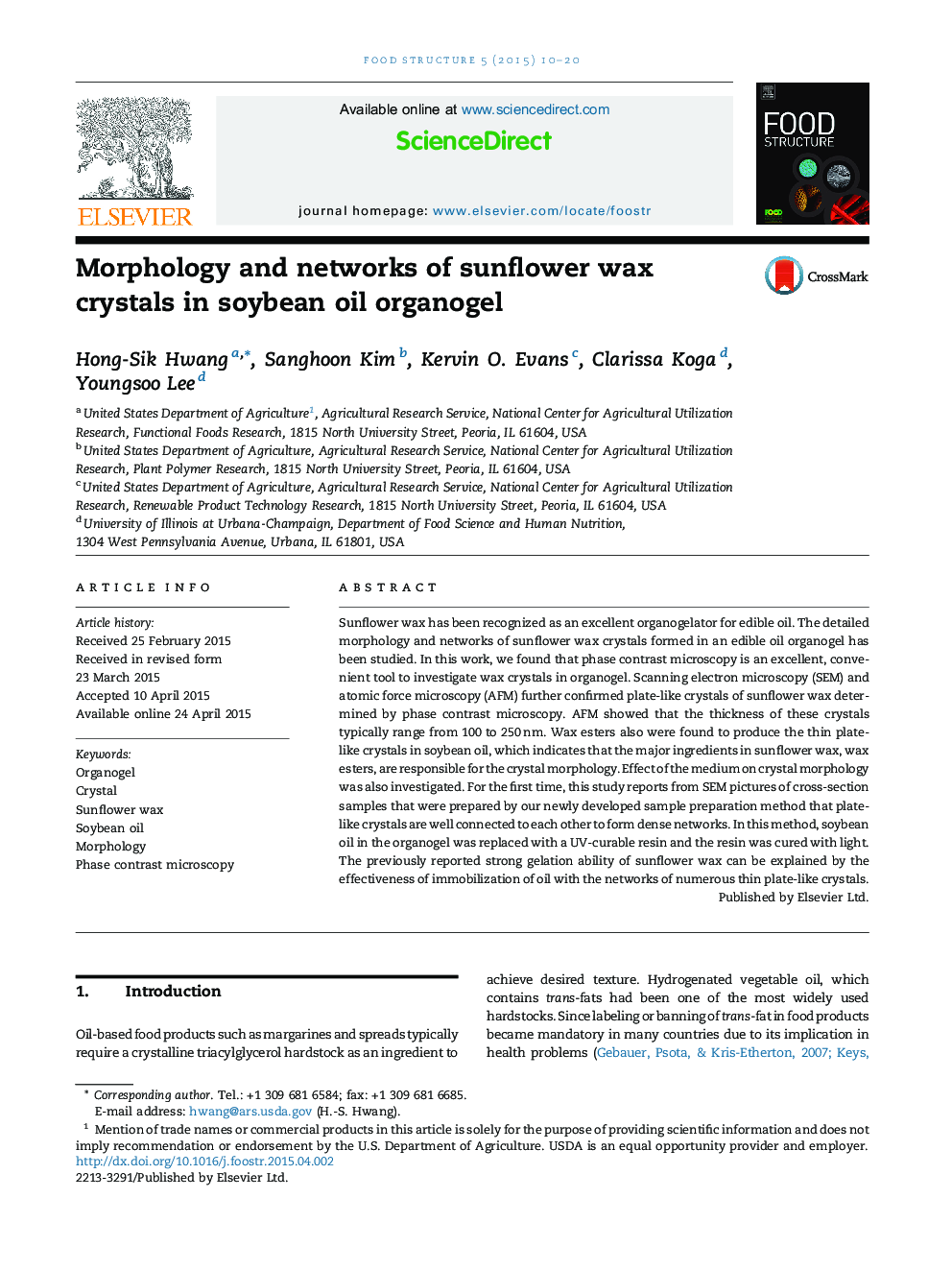| Article ID | Journal | Published Year | Pages | File Type |
|---|---|---|---|---|
| 19910 | Food Structure | 2015 | 11 Pages |
•Phase contrast microscopy was found to be a very convenient method to view crystal morphology.•A new method was developed to investigate three dimensional networks of organogel.•Sunflower wax showed very dense networks of plate-like crystals in organogel.•Effect of the medium on crystal morphology was studied.
Sunflower wax has been recognized as an excellent organogelator for edible oil. The detailed morphology and networks of sunflower wax crystals formed in an edible oil organogel has been studied. In this work, we found that phase contrast microscopy is an excellent, convenient tool to investigate wax crystals in organogel. Scanning electron microscopy (SEM) and atomic force microscopy (AFM) further confirmed plate-like crystals of sunflower wax determined by phase contrast microscopy. AFM showed that the thickness of these crystals typically range from 100 to 250 nm. Wax esters also were found to produce the thin plate-like crystals in soybean oil, which indicates that the major ingredients in sunflower wax, wax esters, are responsible for the crystal morphology. Effect of the medium on crystal morphology was also investigated. For the first time, this study reports from SEM pictures of cross-section samples that were prepared by our newly developed sample preparation method that plate-like crystals are well connected to each other to form dense networks. In this method, soybean oil in the organogel was replaced with a UV-curable resin and the resin was cured with light. The previously reported strong gelation ability of sunflower wax can be explained by the effectiveness of immobilization of oil with the networks of numerous thin plate-like crystals.
Graphical abstractFigure optionsDownload full-size imageDownload as PowerPoint slide
